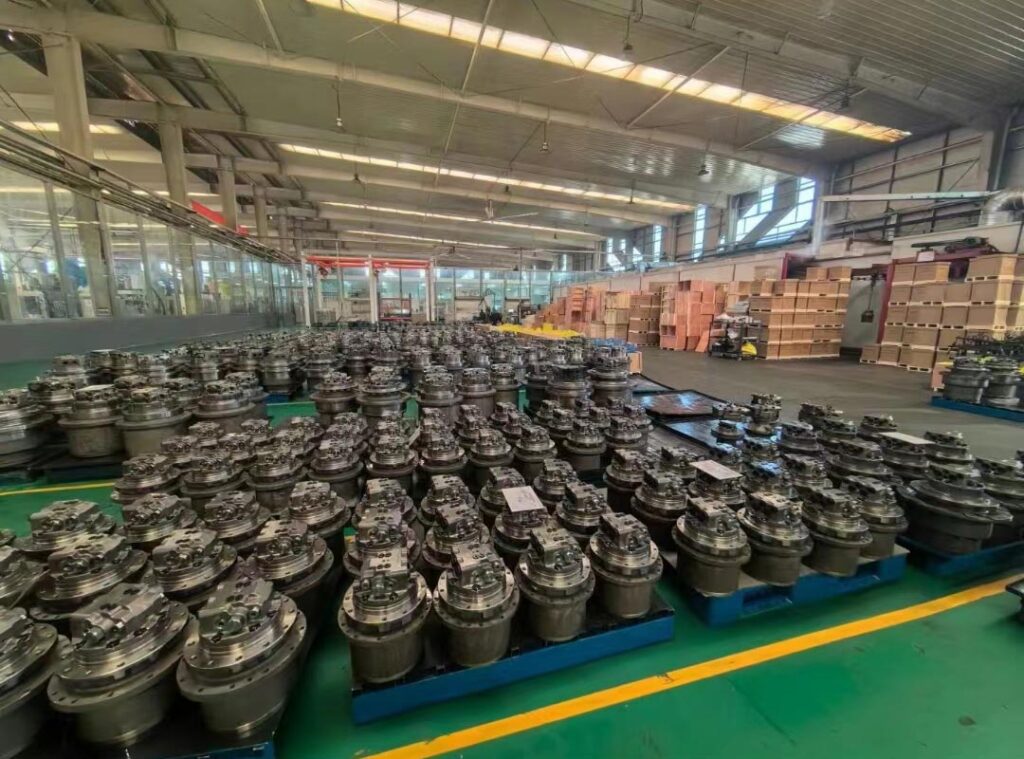
Končni pogoni are a crucial component in heavy machinery, responsible for transferring power from the drive train to the tires or tracks. In this blog, we’ll delve into the intricacies of final drives, including their function, importance, components, and maintenance. Whether you’re a seasoned professional or a curious newcomer, this guide will provide valuable insights into the world of final drives.
In heavy construction equipment, final drives play a vital role in transferring power from the drive train to the tires or tracks. This is achieved using a system of gears designed to reduce speed and increase torque. The final drive is the last component in a machine’s powertrain system, crucial for increasing torque through gear reduction or changing the direction of power flow. Final drives are implemented in various ways depending on the machine type, its purpose, and the manufacturer, but they all share the same basic function of delivering the necessary torque to move the machine efficiently.
Torque, a measure of rotational force, is paramount in large machinery. The relationship between torque and speed is inversely proportional; as one increases, the other decreases. A final drive uses a set of planetary gears or a bull-and-pinion gear system to convert force into torque one last time. This allows the shafts, bearings, and gears to deliver power without being under constant high-torque strain. Final drives are designed to perform under intense circumstances, absorbing feedback while they work. They enable machinery like bulldozers to clear land or excavators to dig through tough terrain, showcasing their critical role in heavy construction tasks.

A planetary gear system, also known as an epicyclic gear train, consists of a sun gear in the center surrounded by planet gears, with a ring gear encircling the planet gears. This system is named for its resemblance to planets orbiting the sun. The use of multiple planet gears significantly increases the torque capability of the system. This configuration allows for efficient power transfer and torque multiplication, making planetary gear systems ideal for heavy-duty applications like final drives in construction machinery.
Final drives can be standalone or integrated into the axle housing, depending on the needs and duties of the machine. While the workings and design of final drives often share similar aspects, their shape, location, and components are specific to the machine. Common locations for final drives include the tracks of an excavator or the rear wheels of a bulldozer. Understanding the specific placement and design requirements for each machine is essential for effective maintenance and operation.

Final drives are indispensable in heavy machinery, enabling efficient power transfer and torque multiplication to handle demanding tasks. Understanding their function, components, and maintenance is crucial for anyone involved in the operation or maintenance of construction equipment. By appreciating the role of final drives, we can better ensure their longevity and reliability, ultimately enhancing the performance of the machinery they power.

A final drive transfers power from the drive train to the tires or tracks, using a gear system to reduce speed and increase torque.
Torque measures rotational force, crucial for heavy machinery to perform tasks requiring significant power, such as moving earth or lifting loads.
A planetary gear system includes a sun gear, planet gears, a ring gear, and carriers holding the planet gears.
The location varies by machine type and design but is commonly integrated into the tracks or wheels of heavy machinery.
It uses planetary gears or a bull-and-pinion system to convert input power into increased torque, essential for heavy-duty operations.
The housing encloses and protects the final drive components, maintaining lubrication and connecting the drive to the machine.
Final drives can be standalone units or integrated into the axle housing, depending on the machine’s design and function.
Ball bearings reduce friction and allow smooth movement, ensuring efficient operation of the final drive components.
Using multiple planet gears increases the system’s torque capability, making it suitable for heavy-duty applications.
Regular inspections, lubrication, and timely repairs are essential to ensure the longevity and efficiency of a final drive.